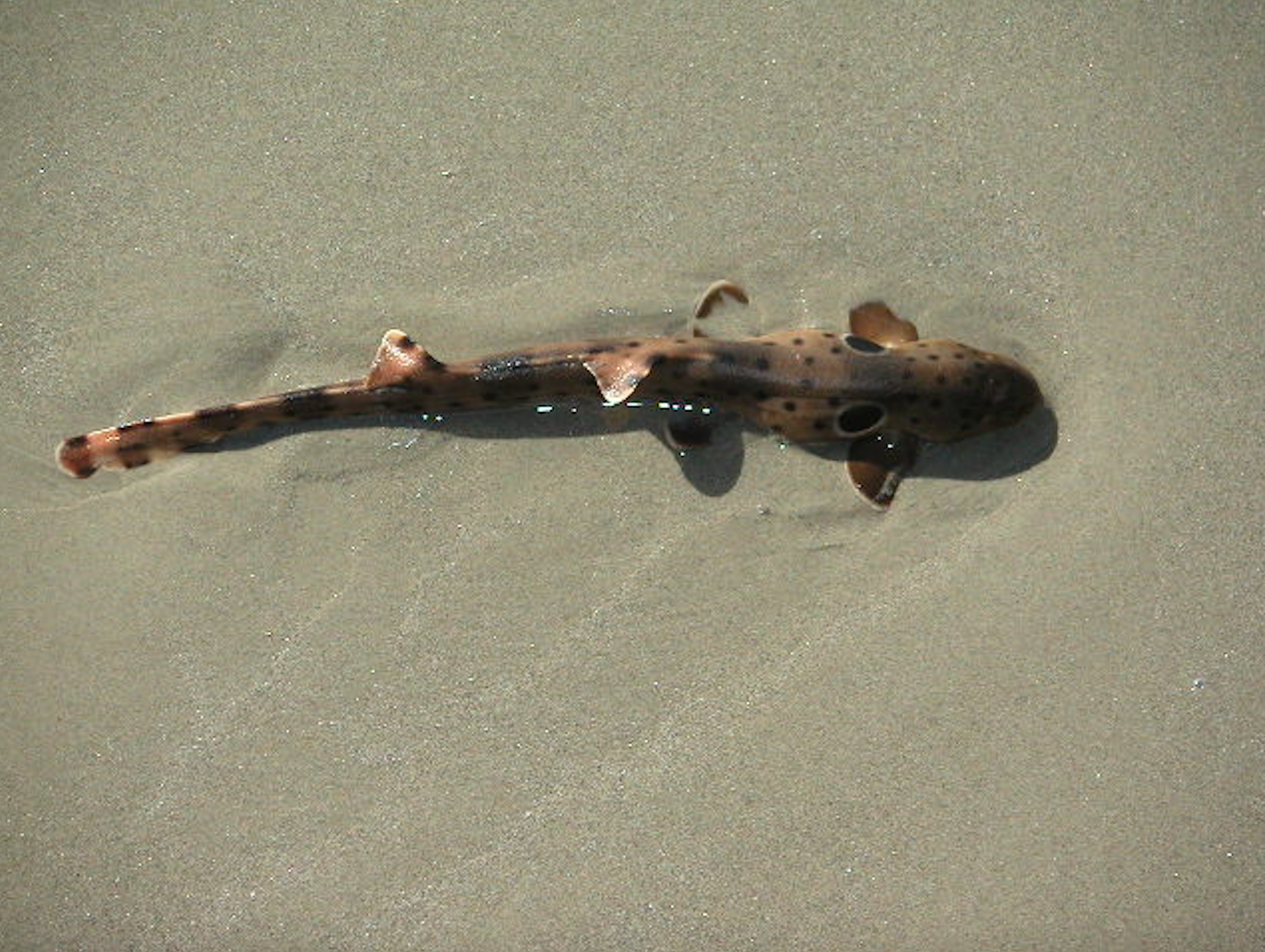‘Walking Sharks’ Are the Newest Branch of the Shark Family Tree

Credit to Author: Becky Ferreira| Date: Mon, 20 Jan 2020 22:34:24 +0000
There is an entire cinematic subculture devoted to sharks that find ingenious ways to travel on land, be it via sharknado, genetic hybridization, or occult forces. Meanwhile, in the real world, there actually is a family of sharks that have evolved to “walk” on land, though they are much smaller, cuter, and less ravenous for human flesh than their counterparts.
These walking sharks belong to the Hemiscyllium family, which is the newest lineage of sharks on Earth, according to a study published on Monday in the journal Marine and Freshwater Research. Using specially adapted fins, the sharks are able to pull themselves across reefs in their tropical Indo-Australian habitat, even when they are not submerged by water.
“They’re incredibly cute little animals and are really more like a gecko walking around than a shark,” said co-author Mark Erdmann, a coral reef ecologist at the California Academy of Sciences, in a call.
“They are not big swimmers,” added Erdmann, who also serves as vice president of the Asia-Pacific Field Division of Conservation International, an American nonprofit environmental organization. “They stay on the same reef where they are born. They are very much homebodies.”
While these ambulatory skills have been documented in previous studies, Erdmann and his colleagues shed new light on the family’s evolutionary origins by analyzing DNA from the nine currently recognized species of Hemiscyllium. The team conducted a molecular phylogenetic analysis of the sharks, which means they used DNA sequencing to figure out the sharks’ genetic relationships to each other, and the wider shark lineage.
The results revealed that walking sharks are the youngest branch of the shark family tree, which dates back about 450 million years.
“With our molecular clock, we’ve been able to show that this group really only branched off from their nearest ancestor about nine million years ago and they’ve been actively radiating ever since,” Erdmann said. “Obviously in human terms, that still seems like a long time ago, but for sharks, and for speciation in general, that’s actually very recent.”
This timeline of speciation coincides with major geological changes that were occurring as the Australian continental plate slammed into landforms north of it. These tectonic processes, along with prolific volcanic eruptions, have repeatedly scrambled the region over millions of years like “a giant island disco,” as Erdmann described it.
Walking sharks weathered these geological storms by flourishing in newly created shallow reefs, where they gained the ability to wriggle overland to remote tidal pools. The sharks, which typically measure a foot or two in length, have also adapted to endure the oxygen depletion that occurs in these isolated pools at low tide.
But despite these amazing adaptations, walking sharks are vulnerable to natural disasters, such as tsunamis and volcanic eruptions. “The fact that they have such tiny little distributions—each one has a small pocket like a bay or an archipelago—makes them just intrinsically susceptible to large perturbations and extinction events,” Erdmann said.
The sharks are also increasingly facing anthropogenic pressures, including rising popularity as an aquarium attraction and potential habitat loss due to coastal development. For that reason, conservationists have been working to secure more protections for walking sharks, and have succeeded in adding three of the nine species to the International Union for Conservation of Nature Red List.
Erdmann and his colleagues plan to conduct many more expeditions to the Indo-Pacific reefs where these animals thrive, in order to learn more about their conservation requirements and the extent of their range and varieties.
“The genetics very much confirm that these are a very young radiation and they seem to still be actively speciating, so we reckon that there’s probably a good chance of a few more species of walking shark out there,” he said. “This shows to us that they very much are still an active part of our evolving planet, and that’s really good news.”
This article originally appeared on VICE US.